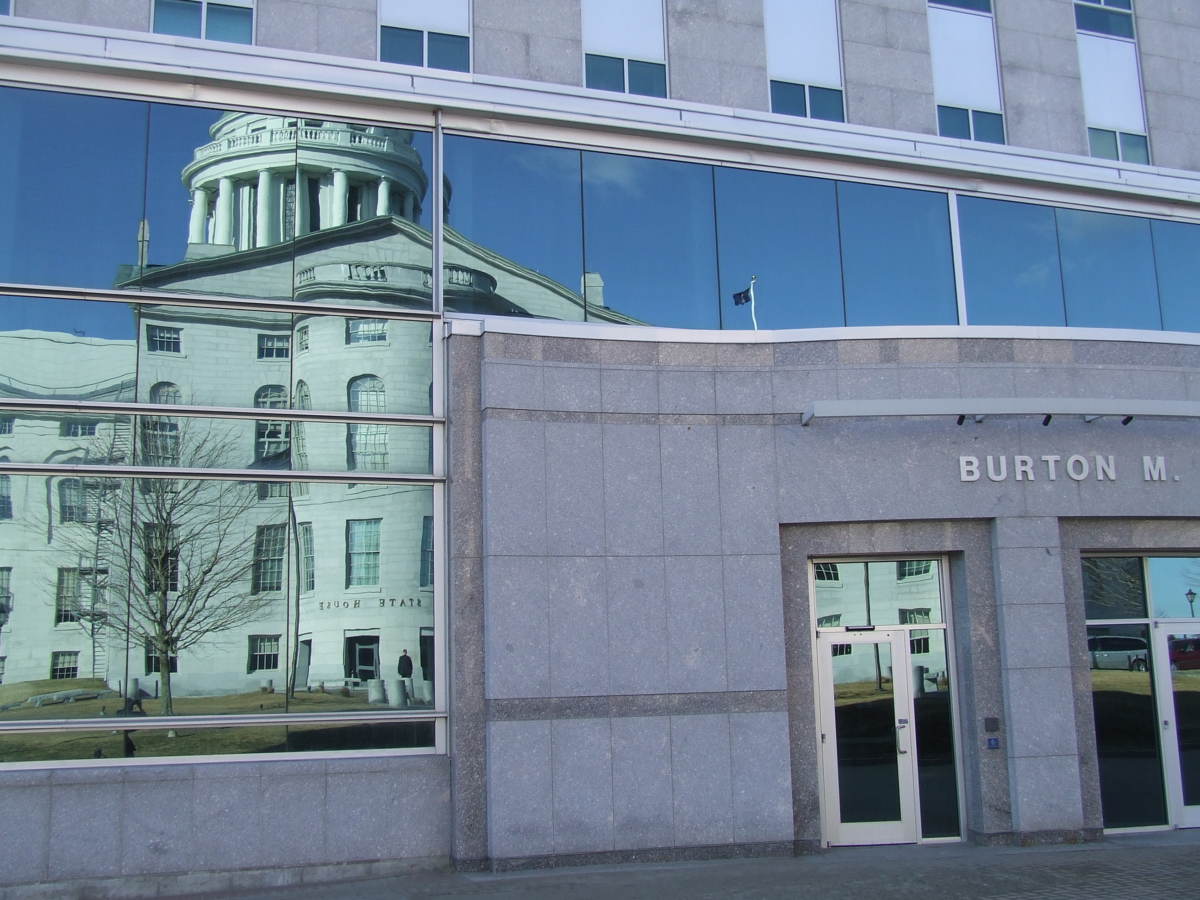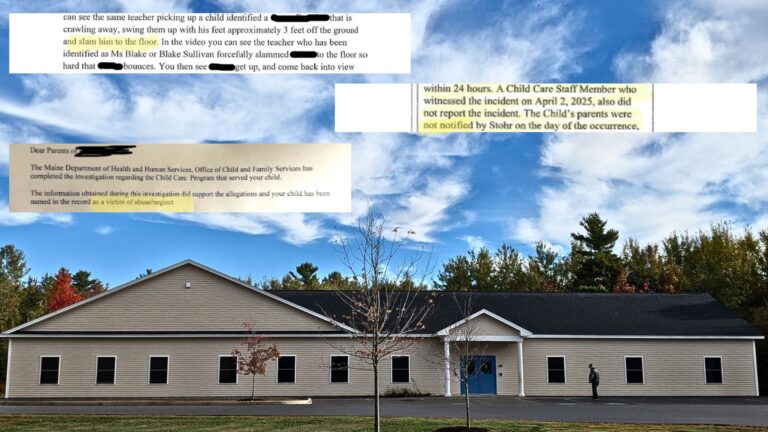Editor’s note: This story is part of a multi-part series about the state’s debt to teachers and state employees for their pensions and retiree health care.
How does a state of only 1.3 million people end up $4.4 billion behind in its payments for just one state program?
It doesn’t pay its bills on time, makes promises without knowing the costs, loses money in the stock market and ignores repeated warnings that the debt is getting worse by the year.
The official name of the debt is the unfunded actuarial liability, and the program is the pension for Maine state employees and public school teachers.
The $4.4 billion represents $3,385 in debt for every man, woman and child in the state.
The debt is so large it eats up 10 percent of the state budget — more than the budget for the state colleges — and is projected to need an even larger portion of tax dollars in coming years, perhaps as much as one out of every five dollars Maine residents pay in state taxes.
The Maine Center for Public Interest Reporting has reviewed multiple studies of the pension system, legislative records, historical reports from the pension trustees and interviewed more than a dozen experts to get to the root causes of the pension liability.
The research not only shows how this particular problem was created, but also offers a larger lesson in how Maine’s state government operated.
The story of the pension debt that many are calling a looming fiscal crisis is the story of how a government can create a fiscal mess for taxpayers by satisfying the needs of a politically significant group while pushing the costs into a future that has now arrived.
An ‘afterthought’
Few in the state are as knowledgeable about the Maine pension system as Robert A. G. Monks, the chairman of two blue ribbon studies of the system that strongly warned of the current problem.
The cost of pensions, said Monks, a Cape Elizabeth resident, “has been an afterthought” at the statehouse.
For decades, he said, the attitude had been, “Hey, it’s someone else’s liability — it’s not going to come up in our session.”
Instead, starting in the late 1940s and right up until the mid-90s, with a few exceptions, legislators and governors from both parties expanded and improved the pension benefits, often without an accurate estimate of the costs or a plan to pay for them.
Peter Leslie, a member the 1988 Monks commission and a trustee since 1995, explained the accumulated debt this way: “You don’t pay it the first year and you don’t pay the next year and you don’t pay it the next year. It compounds fast.”
As Alan Caron, whose nonpartisan think tank Envision Maine is about to release a report called “Reinventing Maine Government,” said: “The art of politics is giving things — not taking things away.”
The “giving” started as early as 1913, when the legislature granted veteran teachers an annual pension of $250. And until 1943, governors had the right to grant pensions to individual state employees on their own.
In 1943, the legislature granted pensions to all longtime state employees who worked until they were 65. Even then, the pension board’s trustees were concerned about the future costs of putting that many people into a system that neither the state nor the employees had contributed to up to that point.
That’s why those trustees — 67 years ago — recommended that the state put an amount aside each year to pay for the pensions. If the legislature and governors did that, the trustees estimated the debt would be “completely paid off over a period of about 30 years.”
Those 30 years came and went in 1973. The debt had not only not been paid off — it was more than $200 million.
The current projected date for paying off the liability is 2028.
Rolling over the debt
Perhaps the most important year in the history of the pension system was 1947, when the legislature took on the responsibility to pay pensions of public school teachers across the state.
A year later, the trustees reported to the legislature that with the addition of the teachers, the membership in the pension system went from 5,000 to 12,000, a 140 percent increase — without a matching amount of new assets.
The assets did not match the liability because the teachers until then had never contributed to the pension system. They have since then, but those early debts rolled over and over along with other failures to fully fund the system to the point where in the early 1990s Maine’s pension funding was the third worst in the country.
State Sen. Peter Mills, R-Cornville, was a member of the most recent study of the pension system and has become a student of its history.
“Back 40, 50, 60 years ago,” he said, “teaching was always someone’s second job and state employment didn’t pay all that well. The legislature … made it up to you with a nice pension. They felt many wouldn’t live long enough to enjoy it and it wouldn’t be all that expensive.
“But thanks to modern health care,” Mills said, “we live a lot longer, and through collective bargaining they got themselves pretty good pay raises” which are used to calculate their pension.
Another longtime legislator and former state financial officer, Sawin Millett, R-Waterford, recalled: “The state took on the liability for the teachers (pension) without receiving any assets. It was a generosity thing … also, no one was doing any actuarial work that would assess the future costs, so they didn’t see the problem we’d have down the line.”
That problem — the accumulated liability — was aggravated numerous times because the state improved benefits without putting aside enough money to pay for them, according to the studies.
Warning signals go up
In 1973, for example, the legislature made seven improvements to the pension, including lowering the number of years of services required for full retirement from 30 to 25.
In 1975, the pension trustees’ report listed a whole page of changes made by the legislature that it estimated would cost $1.1 million in 1978, when they were in full effect.
The trustees were also sent up fresh warning signals that year about the state’s need to start paying more on the long-term liability. They asked the legislature for a $5.8 million appropriation to help make up for the debt the system inherited when the legislature took on the teacher pensions
The trustees said, “This amount was deleted from executive budget and was not recognized by the legislative budget. The result of this … will mean that the funding period on the Systems’ accrued liability will run for 29 years vs the 21 years which had been scheduled heretofore.”
Again, a pessimistic projection wasn’t pessimistic enough: Those 29 years expired in 2004 without paying off the debt.
In 1978, the trustees were still making the point. To help pay for the cost of taking on the teachers and other losses, they borrowed from the pension assets of state employees and the recently-hired teachers who were now contributing from their paychecks.
“The accumulated borrowings for the old system retirement allowance account amounted to $105,881,897 on June 30, 1978,” the trustees wrote.
Two years later, the first of three formal studies on the pension system was completed — and the warnings continued:
“ … the MSRS (Maine State Retirement System) is not being funded on a realistic basis,” the study said, citing a $12 million gap between what the governor and legislature had appropriated for 1980 and what was needed to avoid a negative cash flow.
The state’s failure to fund the teachers’ pensions, the report said, meant “virtually the entire burden of funding this liability will be deferred well into the 1990s,” a prediction that proved true, with the exception that it not only extended into ‘90s but also well into this century.
Eight years later, in 1988, what is known as the “Monks One” study was released.
One of the first things that commission did was look at the 1980 study. The Monks group concluded the ’80 study’s stern message “was not well received by the (pension) Board and the System’s actuary” and that legislation to fix the problem “was ignored.’
One the biggest problems the 1988 study brought to light was that state employees and teachers were often retiring well before age 65 — but the pension’s projections were based on employees working until they were 65.
That drove up the costs because employees stopped contributing to the system earlier and started collecting from it sooner.
The Monks One research found that Maine’s system was only 39 percent funded — meaning it had nowhere near enough money to pay all future benefits. The average across the county for state system at that time was 72 per cent funded.
Despite all of these warnings, the records show the legislature continued to improve pension benefits while failing to pay enough into the system, adding to the liability a number of times.
No questions asked
David Wakelin, who was brought on the pension board after serving on the first Monks commission, recalled: “They promised benefits that were not adequately funded … they had an actuary who had assumptions that were not consistent with what was happening on the ground. No one was holding their feet to the fire.”
No one asked the question, for example: “Do you understand that this benefit you promised will cost $500 million,” Wakelin said.
Ryan Low, who until July was Gov. John Baldacci’s chief financial officer, said that up until the mid-90s, “my understanding is — I wasn’t around — is the state would get the bill and sometimes they would make the full payment and sometimes they would make considerably less.”
The Monks Two study, done in 1994, concluded: Maine’s pension plan “is highly vulnerable to an absence of discipline in the legislative and executive processes of budgeting.”
A year later after the second Monks commission in 1994, Leslie — a highly-successful international investment banker in his private life — hit even harder in an essay for the Maine Center for Economic Policy.
Leslie, the current chair of the pension board, wrote that Maine has a “20 year history” of “tinkering” with the pension numbers for “political expediency.”
One example: During the budget crisis of the early 90s, the legislature and Gov. John McKernan mandated the pension board change its investment assumptions from an 8 percent return to 8.2 percent. Leslie wrote that while that “saved” $20 million on paper, “the number was fictitious” because it was based on politics not fiscal analysis.
During this same period, facing a budget hole of $1 billion-plus, McKernan and the legislature reduced benefits, which saved money, but also borrowed from the retirement funds to help fill the budget hole.
By this point they was a growing consensus — from legislators, from the groups that represented employees and teachers and from the members of the study commissions — that something had to be done to force the state into some form of fiscal discipline.
Mary Anne Turowski, a longtime veteran of the state employee union and its current lobbyist, recalled state employees and teachers were increasingly worried.
“There was no certainty in the state’s capacity to continue to pay, “ she said, “ The attitude was. “We were robbed!”
Disclosure: Robert A. G. Monks is a member of the Center’s Advisory Board.







